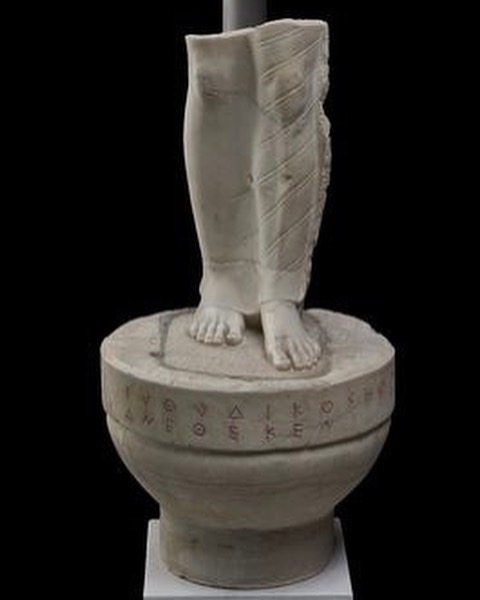She is not necessarily my favourite of the Athenian Akropolis korai (I tend to prefer her jollier sisters), and sometimes referred to as “sullen”, but her more solemn beauty is important in so many ways.
While her format (standing, draped maiden) is familiar from the decades long tradition of glorious sculpted maidens erected on the Akropolis, the innovation here is her facial expression – the lingering ‘archaic smile’ has given way to a more ambivalent pout.



She was found in two parts, in two pits, the upper in front of the Parthenon in 1882 and lower near the Erechtheion some years later. These pits of artworks damaged from the Persian sack of 480 B.C. (some words sound better in German: ‘Perserschutt’ is one of them). Better minds than mine have thought and written about the subject, but the gist is the mourning Athenians out of piety buried the ruined temple-elements and statues in dedicated pits. And this all gives a date for archaeologists to hang their hats on – everything buried within was produced by that terrible 480 destruction.
This maiden (the so-called “Euthydikos” kore, named for the dedicatory inscription on her base), is one of the earliest examples of the new style in Greek art usually referred to as the ‘Severe Style that reached fruition in the glorious temple sculpture of the Temple of Zeus at Olympia.
She is cutting edge, and after all some days one doesn’t feel like smiling. But say Perserschutt three times fast and you just might.




